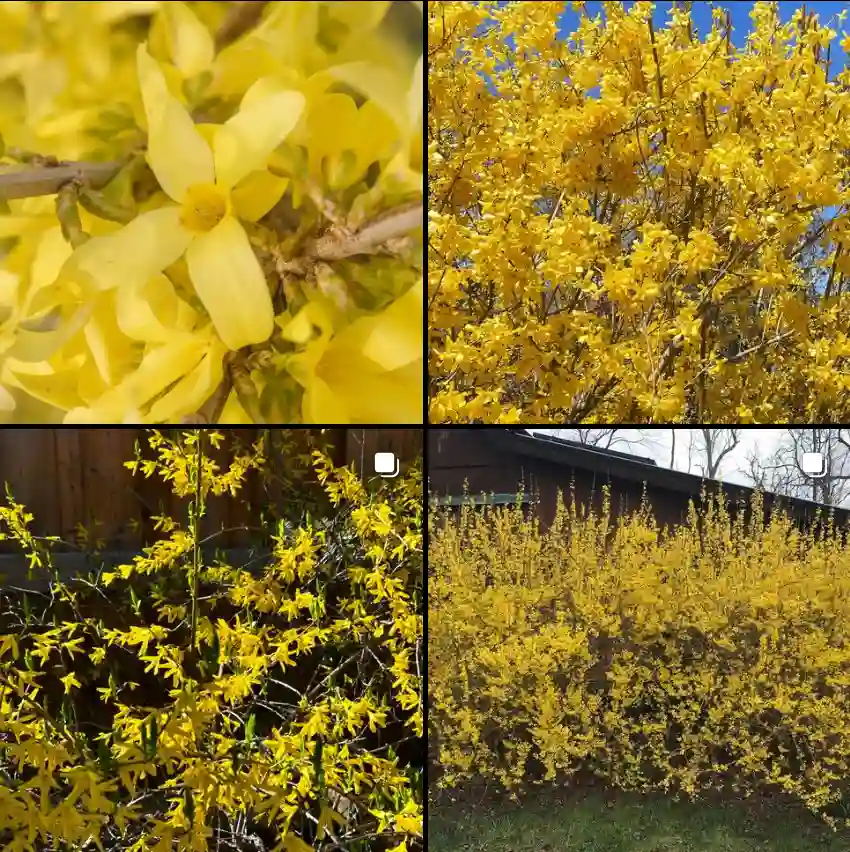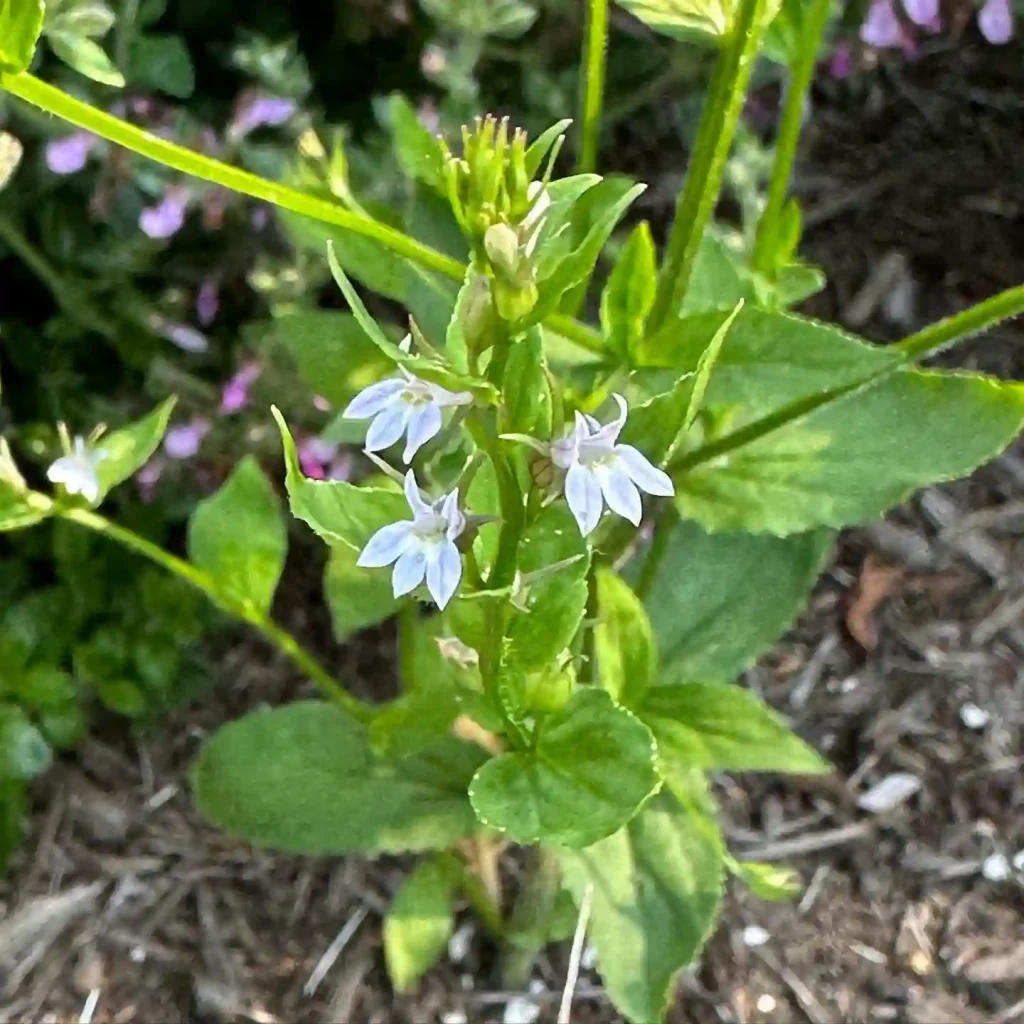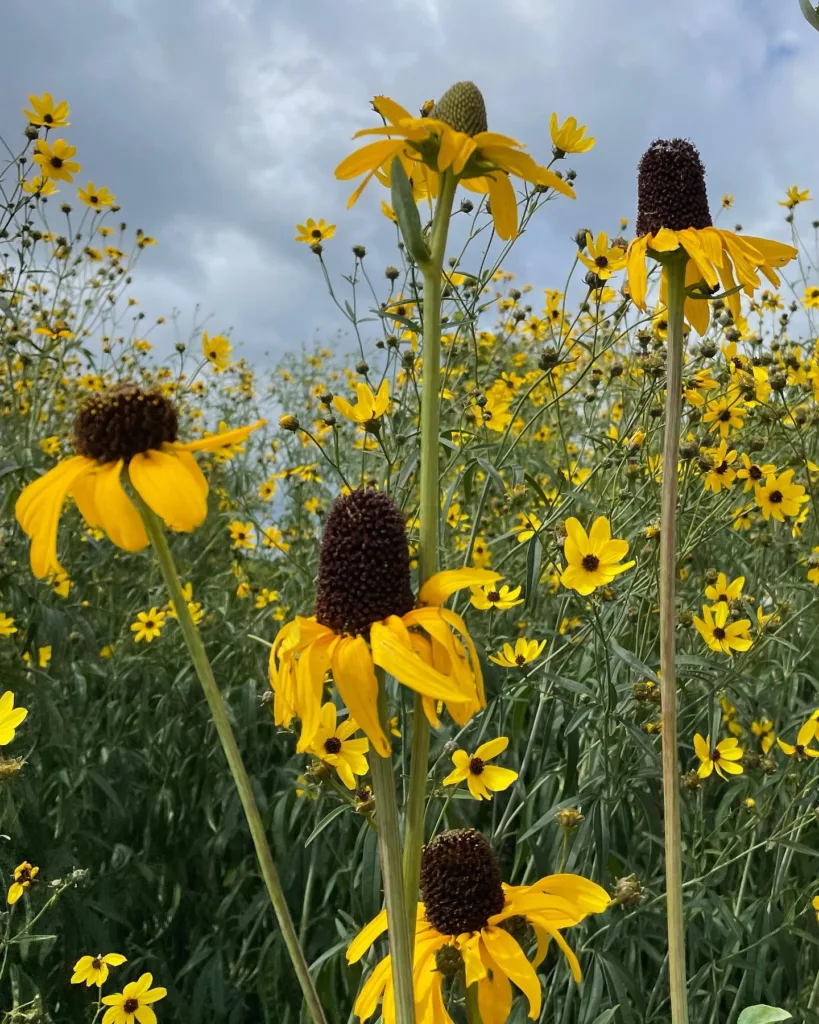
May 3 – Adiantum
"Adiantum, the maidenhair fern, defines May 3."
Adiantum symbolizes grace and delicacy. You possess an elegance that captivates those around you, much like the fern’s fine, lacy fronds. Your gentle demeanor and resilience make you a source of quiet strength and inspiration.
The Enchanting World of Maidenhair Ferns
I’ve always been drawn to the delicate beauty of ferns, their intricate fronds unfurling like emerald wings. But among the many fern genera, there’s one that holds a special place in my heart: Adiantum, the maidenhair ferns belong to the Pteridaceae family. These botanical wonders, with their graceful foliage and resilient nature, have captivated plant enthusiasts for centuries.
A Closer Look at Adiantum
The name Adiantum originates from the Greek word adiantos, meaning “unwetted.” This refers to the remarkable water-repellent properties of the fronds, which shed water droplets without becoming wet. This unique characteristic, coupled with their delicate appearance, has earned them the common name “maidenhair ferns.”
Maidenhair ferns are typically characterized by their slender, wiry, black or dark purple stipes (the stalk that supports the frond) and their fan-shaped pinnules (the ultimate segments of the frond). These pinnules are often arranged in a delicate, almost lace-like pattern, creating a sense of airiness and grace.
These ferns thrive in damp, shaded environments, often found gracing the floors of forests, nestled among rocks near streams, or even adorning the walls of humid caves. Their ability to flourish in low-light conditions makes them a popular choice for indoor cultivation, bringing a touch of the wild into homes and gardens.
A Diverse Genus
The genus Adiantum is incredibly diverse, boasting over 200 species distributed across the globe. Here are:
- Adiantum abscissum Schrad.
- Adiantum acrolobum A.Rojas
- Adiantum adiantoides (J.Sm.) C.Chr.
- Adiantum aethiopicum L.
- Adiantum × ailaoshanense Y.H.Yan & Ying Wang
- Adiantum alan-smithii R.Y.Hirai, Sundue & J.Prado
- Adiantum alarconianum Gaudich.
- Adiantum aleuticum (Rupr.) C.A.Paris Plant FAQs: Adiantum Aleuticum – Western Maidenhair Fern
- Adiantum alleniae S.Linds.
- Adiantum alomae Caluff
- Adiantum amblyopteridium Mickel & Beitel
- Adiantum amplum C.Presl
- Adiantum anceps Maxon & C.V.Morton
- Adiantum andicola Liebm.
- Adiantum aneitense Carruth.
- Adiantum argutum Splitg.
- Adiantum atroviride Bostock
- Adiantum balfourii Baker
- Adiantum bellum T.Moore
- Adiantum bessoniae Jenman
- Adiantum blumenavense Rosenst.
- Adiantum braunii Mett.
- Adiantum cajennense Willd. ex Klotzsch
- Adiantum calcareum Gardner
- Adiantum camptorachis Sundue, J.Prado & A.R.Sm.
- Adiantum capillatum A.R.Sm. & J.Prado
- Adiantum capillus-junonis Rupr.
- Adiantum capillus-veneris L. Plant FAQs: Adiantum Capillus Veneris
- Adiantum caribense A.Rojas
- Adiantum caryotideum Christ
- Adiantum caudatum L.
- Adiantum celebicum Christ
- Adiantum chienii Ching
- Adiantum chilense Kaulf.
- Adiantum ciliatum Blume
- Adiantum cinnamomeum Lellinger & J.Prado
- Adiantum comoroense (Tardieu) Verdc.
- Adiantum concinnum Humb. & Bonpl. ex Willd.
- Adiantum confine Fée
- Adiantum cordatum Maxon
- Adiantum cremersii Boudrie & J.Prado
- Adiantum crespianum Bosco
- Adiantum cunninghamii Hook.
- Adiantum cupreum Copel.
- Adiantum curvatum Kaulf.
- Adiantum davidii Franch.
- Adiantum dawsonii Lellinger & J.Prado
- Adiantum decipiens Desv.
- Adiantum decoratum Maxon & Weath.
- Adiantum deflectens Mart.
- Adiantum delicatulum Mart.
- Adiantum deltoideum Sw.
- Adiantum dentatum A.H.Wang, F.G.Wang & F.W.Xing
- Adiantum diaphanum Blume
- Adiantum digitatum Hook.
- Adiantum diogoanum Glaz. ex Baker
- Adiantum diphyllum Maxon
- Adiantum discolor J.Prado
- Adiantum dissimulatum Jenman
- Adiantum dolosum Kunze
- Adiantum edgeworthii Hook.
- Adiantum elegantulum Maxon
- Adiantum erylliae Tardieu & C.Chr.
- Adiantum erythrochlamys Diels
- Adiantum excisum Kunze
- Adiantum feei T.Moore ex Fée
- Adiantum fengianum Ching
- Adiantum filiforme Gardner
- Adiantum flabellulatum L.
- Adiantum flabellum C.Chr.
- Adiantum formosanum Tagawa
- Adiantum formosum R.Br.
- Adiantum fournieri Copel.
- Adiantum fragile Sw.
- Adiantum fragiliforme C.Chr.
- Adiantum fructuosum Kunze
- Adiantum fuliginosum Fée
- Adiantum fulvum Raoul
- Adiantum galeottianum Hook.
- Adiantum gertrudis Espinosa
- Adiantum giganteum J.Prado
- Adiantum gingkoides C.Chr.
- Adiantum glabrum Copel.
- Adiantum glaucescens Klotzsch
- Adiantum gomphophyllum Baker
- Adiantum gracile Fée
- Adiantum granvilleanum Boudrie & J.Prado
- Adiantum gravesii Hance
- Adiantum grossum Mett.
- Adiantum henslovianum Hook.f.
- Adiantum hirsutum Bory
- Adiantum hispidulum Sw. Plant FAQs: Adiantum Hispidulum – Rough Maidenhair Fern
- Adiantum hollandiae Alderw.
- Adiantum hornei Baker
- Adiantum hosei Baker
- Adiantum humile Kunze
- Adiantum imbricatum R.M.Tryon
- Adiantum incertum Lindm.
- Adiantum incisum Forssk.
- Adiantum induratum Christ
- Adiantum intermedium Sw.
- Adiantum isthmicum B.Zimmer
- Adiantum × janzenianum A.Rojas & C.Herrera
- Adiantum japonicum T.Zhao, Z.Y.Zuo, J.Wen & J.Mei Lu
- Adiantum jordanii Müll.Hal.
- Adiantum juxtapositum Ching
- Adiantum kendalii Jenman
- Adiantum kingii Copel.
- Adiantum klossii Gepp
- Adiantum krameri B.Zimmer
- Adiantum lamrianum Bidin & R.Jaman
- Adiantum latifolium Lam.
- Adiantum latipinnulum Boudrie & J.Prado
- Adiantum leprieurii Hook.
- Adiantum lianxianense Ching & Y.X.Lin
- Adiantum lindsaeoides J.Prado & R.Y.Hirai
- Adiantum lobatum C.Presl
- Adiantum longzhouensis A.H.Wang, F.G.Wang & F.W.Xing
- Adiantum lorentzii Hieron.
- Adiantum lucidum (Cav.) Sw.
- Adiantum macrocladum Klotzsch
- Adiantum macrophyllum Sw.
- Adiantum madagascariense H.Rosend.
- Adiantum malesianum J.Ghatak
- Adiantum mariesii Baker
- Adiantum mariposatum M.R.McCarthy & Hickey
- Adiantum mathewsianum Hook.
- Adiantum mcvaughii Mickel & Beitel
- Adiantum meishanianum F.S.Hsu ex Yea C.Liu & W.L.Chiou
- Adiantum melanoleucum Willd.
- Adiantum membranifolium S.Linds. & Suksathan
- Adiantum mendoncae Alston
- Adiantum menglianense Y.Y.Qian
- Adiantum mindanaoense Copel.
- Adiantum monochlamys D.C.Eaton
- Adiantum monosorum Baker
- Adiantum moorei Baker
- Adiantum × moranii J.Prado
- Adiantum multisorum A.Samp.
- Adiantum mynsseniae J.Prado
- Adiantum myriosorum Baker
- Adiantum nelumboides X.C.Zhang
- Adiantum neoguineense T.Moore
- Adiantum nodosum J.Prado, R.Y.Hirai & A.R.Sm.
- Adiantum novae-caledoniae Keyserl.
- Adiantum nudum A.R.Sm.
- Adiantum oaxacanum Mickel & Beitel
- Adiantum obliquum Willd.
- Adiantum obovatum A.H.Wang, F.G.Wang & F.W.Xing
- Adiantum ogasawarense Tagawa
- Adiantum olivaceum Baker
- Adiantum orbignyanum Mett.
- Adiantum ornithopodum C.Presl
- Adiantum ovalescens Fée
- Adiantum oyapokense Jenman
- Adiantum palaoense C.Chr.
- Adiantum papilio Rakotondr. & Hemp
- Adiantum papillosum Handro
- Adiantum paraense Hieron.
- Adiantum parishii Hook.
- Adiantum patens Willd.
- Adiantum pearcei Phil.
- Adiantum pectinatum Kunze & Ettingsh.
- Adiantum pedatum L. Plant FAQs: Adiantum Pedatum
- Adiantum peruvianum Klotzsch
- Adiantum petiolatum Desv.
- Adiantum phanerophlebium (Baker) C.Chr.
- Adiantum phanomensis S.Linds. & D.J.Middleton
- Adiantum philippense L.
- Adiantum phyllitidis J.Sm.
- Adiantum platyphyllum Sw.
- Adiantum poeppigianum C.Presl
- Adiantum poiretii Wikstr.
- Adiantum polyphyllum Willd.
- Adiantum proliferum Roxb.
- Adiantum pseudocajennense J.Prado, R.Y.Hirai & A.R.Sm.
- Adiantum pseudotinctum Hieron.
- Adiantum pulchellum Blume
- Adiantum pulcherrimum Copel.
- Adiantum pulverulentum L.
- Adiantum pumilum Sw.
- Adiantum pyramidale (L.) Willd.
- Adiantum raddianum C.Presl Plant FAQs: Adiantum Raddianum – Delta Maidenhair Fern
- Adiantum rectangulare Lindm.
- Adiantum reniforme L. Plant FAQs: Adiantum Reniforme – Lotus-leaved Maidenhair Fern
- Adiantum reptans A.Rojas
- Adiantum rhizophorum Sw.
- Adiantum rhizophytum Schrad.
- Adiantum rivulare Boudrie & J.Prado
- Adiantum roborowskii Maxim.
- Adiantum rondonii A.Samp.
- Adiantum ruizianum Klotzsch
- Adiantum scalare R.M.Tryon
- Adiantum schweinfurthii Kuhn
- Adiantum seemannii Hook.
- Adiantum semiorbiculatum Bonap.
- Adiantum sericeum D.C.Eaton
- Adiantum serratifolium Alderw.
- Adiantum serratodentatum Willd.
- Adiantum shastense Huiet & A.R.Sm.
- Adiantum shepherdii Hook.
- Adiantum siamense Tagawa & K.Iwats.
- Adiantum silvaticum Tindale
- Adiantum sinuosum Gardner
- Adiantum soboliferum Wall. ex Hook.
- Adiantum solomonii J.Prado
- Adiantum × spurium Jermy & T.G.Walker
- Adiantum squamulosum J.Prado & A.R.Sm.
- Adiantum stenochlamys Baker
- Adiantum stolzii Brause
- Adiantum subcordatum Sw.
- Adiantum subvolubile Mett.
- Adiantum taiwanianum Tagawa
- Adiantum tenerum Sw. Plant FAQs: Adiantum Tenerum – Brittle Maidenhair Fern
- Adiantum terminatum Kunze ex Miq.
- Adiantum tetragonum Schrad.
- Adiantum tetraphyllum Humb. & Bonpl. ex Willd.
- Adiantum thongthamii Suksathan
- Adiantum tibeticum Ching & Y.X.Lin
- Adiantum tinctum T.Moore
- Adiantum tomentosum Klotzsch
- Adiantum × tracyi C.C.Hall ex W.H.Wagner
- Adiantum trapeziforme L. Plant FAQs: Adiantum Trapeziforme – Diamond Maidenhair Fern
- Adiantum trichochlaenum Mickel & Beitel
- Adiantum tricholepis Fée
- Adiantum trilobum L.
- Adiantum tripteris K.U.Kramer
- Adiantum tryonii J.Prado
- Adiantum tuomistoanum J.Prado
- Adiantum urophyllum Hook.
- Adiantum × variopinnatum Jermy & T.G.Walker
- Adiantum venustum D.Don Plant FAQs: Adiantum Venustum
- Adiantum villosissimum Mett.
- Adiantum villosum L.
- Adiantum × viridimontanum C.A.Paris
- Adiantum viscosum A.Cádiz-Véliz & A.E.Villarroel
- Adiantum vivesii Proctor
- Adiantum vogelii Mett.
- Adiantum wattii Baker
- Adiantum weatherbyanum Espinosa
- Adiantum wilesianum Hook.
- Adiantum wilsonii Hook.
- Adiantum windischii J.Prado
- Adiantum zollingeri Mett.
How to Care for Maidenhair Fern?
Caring for Maidenhair Ferns can be a bit challenging but incredibly rewarding. These ferns thrive in a humid environment, so keeping the soil consistently moist is crucial. They prefer a well-draining potting mix, ideally a blend of peat moss, perlite, and compost. I’ve found that placing a humidifier near them or regularly misting their fronds helps keep the humidity levels up, which is essential for their health.
Light is another critical factor. Maidenhair Ferns do best in bright, indirect light. Direct sunlight can scorch their delicate leaves, while too little light can stunt their growth. I’ve successfully grown mine in east-facing windows where they receive morning sun without the harsh afternoon rays.
How Often to Water Maidenhair Fern?
Watering Maidenhair Ferns requires a bit of finesse. I water mine when the top inch of soil feels dry to the touch. This usually translates to watering about once a week, but it can vary depending on the humidity and temperature in your home. It’s crucial not to let the soil dry out completely, as this can cause the fronds to turn brown and crispy. Conversely, overwatering can lead to root rot, so ensure the pot has good drainage.
Can Maidenhair Fern Grow in Water?
While Maidenhair Ferns are generally grown in soil, I’ve experimented with growing them in water. It’s possible, but they require a lot of care. If you decide to grow them in water, make sure to use a container that provides ample space for the roots and change the water frequently to prevent stagnation. I’ve found that while they can survive in water, they don’t grow as vigorously as they do in soil.
How to Propagate Maidenhair Fern?
Propagating Maidenhair Ferns can be a fun project. The most effective method I’ve used is division. Carefully remove the fern from its pot and gently separate the root ball into smaller sections, ensuring each section has roots and fronds. Re-pot each section into a new container with fresh potting mix. Another method is by spores, but this requires more patience and specific conditions to be successful.
Are Maidenhair Ferns Evergreen?
Maidenhair Ferns are not evergreen. Their fronds can die back during the winter months or if the conditions are not ideal. In my experience, they often go through a period of dormancy, where the fronds turn brown and may appear to be dying. However, they usually come back in the spring with new, fresh growth once the conditions improve.
Are Maidenhair Ferns Perennials?
Yes, Maidenhair Ferns are perennials. They will return year after year if given the right care. They can be a bit temperamental during the winter months, but with proper attention, they can continue to thrive and add beauty to your garden for many years.
Are Maidenhair Ferns Toxic to Cats and Dogs?
One of the questions I get often is whether Maidenhair Ferns are toxic to pets. Fortunately, Maidenhair Ferns are non-toxic to both cats and dogs. I’ve had several cats and dogs over the years, and none have had any adverse reactions to these ferns. However, it’s always best to discourage pets from chewing on plants, as even non-toxic plants can cause digestive upset if consumed in large quantities.
Can Maidenhair Ferns Survive Winter?
Surviving winter can be challenging for Maidenhair Ferns, especially if you live in a colder climate. I’ve found that they do best when brought indoors before the first frost. Ensure they are placed in a spot with consistent humidity and indirect light. If kept outdoors, they require protection from extreme cold and harsh winds.
Do Maidenhair Ferns Like Sun?
Maidenhair Ferns do not like direct sunlight. They prefer bright, indirect light. In my home, placing them in a spot where they receive filtered sunlight or light reflected off a wall works best. Too much direct sun can lead to sunburn on their delicate leaves.
Maidenhair Fern vs. Boston Fern
Comparing Maidenhair Ferns to Boston Ferns, I’ve noticed a few key differences. Maidenhair Ferns have finer, more delicate fronds compared to the more robust and bushy Boston Fern. Boston Ferns are generally easier to care for and more tolerant of varying light conditions. Maidenhair Ferns, on the other hand, require higher humidity and consistent moisture to thrive.
Common Problems and Solutions
Some common problems with Maidenhair Ferns include brown, crispy fronds and yellowing leaves. Brown fronds often indicate a lack of humidity or overexposure to direct sunlight. To fix this, increase humidity levels and adjust their light exposure. Yellowing leaves can be a sign of overwatering or root rot. Ensure proper drainage and avoid waterlogging the soil.
The Allure of Maidenhair Ferns
What is it about maidenhair ferns that has captivated plant lovers for centuries? Perhaps it’s their delicate beauty, their resilience in challenging environments, or their air of mystery and enchantment.
For me, maidenhair ferns represent a connection to the natural world, a reminder of the intricate beauty that can be found in even the most seemingly insignificant corners of our planet. Their presence brings a sense of tranquility and peace, a reminder to slow down and appreciate the simple things in life.
Whether gracing a shaded forest floor or adding a touch of elegance to a home, maidenhair ferns continue to enchant and inspire. Their delicate fronds, dancing in the breeze, whisper tales of resilience, adaptability, and the enduring power of nature’s beauty.
If i die, water my plants!



